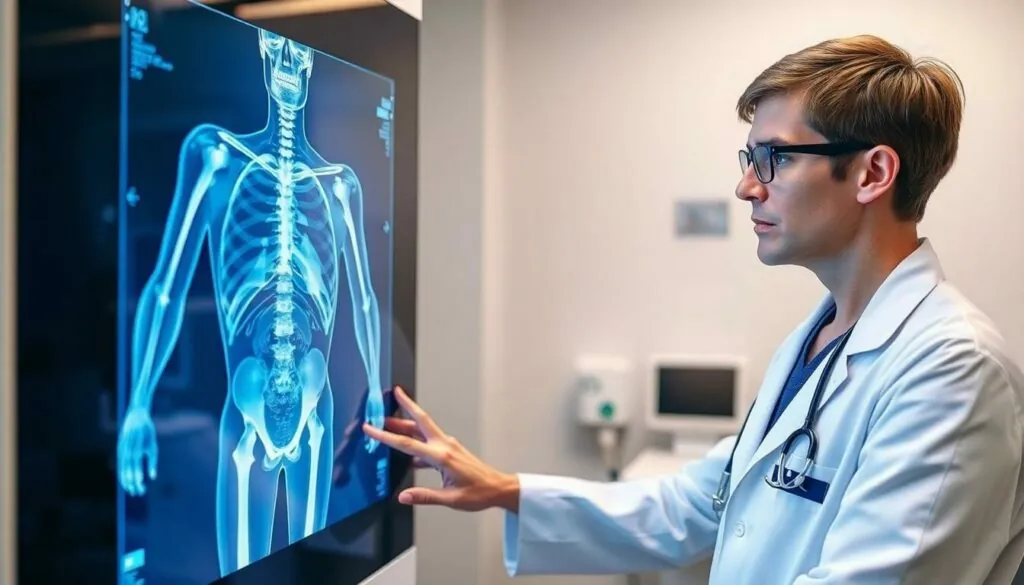Table of Contents
ToggleIn a world where science fiction often feels like science fact, biotech X-ray technology is leading the charge into the future of diagnostics. Imagine a tool that not only sees through skin and bone but also deciphers the molecular whispers of diseases lurking beneath the surface. It’s like having a superhero in the medical field—minus the cape but packed with precision and promise.
What Is Biotech X Ray?
Biotech X-ray combines advanced imaging technology with biotechnology applications. This method provides enhanced diagnostic capabilities by leveraging molecular imaging. Healthcare professionals rely on biotech X-rays to visualize internal structures and identify potential health issues effectively.
This technology penetrates through skin and bone, allowing for detailed examination. It detects molecular signs of diseases such as cancer and arthritis, enabling earlier interventions. The precision of biotech X-ray facilitates accurate disease mapping and minimizes invasive procedures.
Several industries benefit from biotech X-ray innovations. In research settings, scientists utilize this technology to understand complex biological processes. In the pharmaceutical industry, it plays a crucial role in drug discovery and development, supporting the design of more effective therapies.
Cost-effective solutions emerge from biotech X-ray advancements, reducing diagnostic expenses. Improved imaging quality decreases the need for follow-up tests, saving time and resources. Hospitals and clinics can enhance patient care through timely and accurate diagnoses.
Future developments in biotech X-ray promise further enhancements. Ongoing research aims to refine imaging techniques and explore new applications. As technology evolves, it may lead to breakthroughs in understanding rare diseases and personalized medicine.
Applications of Biotech X Ray

Biotech X-ray technology shows diverse applications across multiple fields. Its significant advancements enhance diagnostic capabilities and improve safety and efficiency.
Medical Diagnostics
Medical diagnostics leverage biotech X-ray technology to detect diseases at molecular levels. Healthcare professionals diagnose conditions like cancer and arthritis more accurately with this imaging method. Enhanced visualization enables earlier interventions, improving patient outcomes. This technology reduces the reliance on invasive procedures by mapping diseases more precisely. It identifies abnormalities that conventional imaging may miss, thus ensuring timely treatment. Patients benefit from earlier detection and more tailored therapeutic strategies.
Industrial Inspection
Industrial inspection utilizes biotech X-ray technology for quality control and safety assessments. Manufacturing industries inspect products for structural integrity, identifying defects that could lead to failures. This technology enhances reliability in sectors such as aerospace and automotive manufacturing. Non-destructive testing methods preserve the components while ensuring compliance with safety standards. Biotech X-ray aids in monitoring production processes, allowing companies to improve efficiency and reduce costs. Accurate detection of flaws in materials supports longevity and safety in finished products.
Advantages of Biotech X Ray
Biotech X-ray offers significant benefits for medical diagnostics and industrial applications.
Enhanced Imaging Quality
Enhanced imaging quality represents a major advantage of biotech X-ray technology. This technology provides high-resolution images that reveal intricate details of internal structures. Professionals can visualize molecular signs of disease, improving diagnostic accuracy. Conditions such as cancer and arthritis can be detected earlier, leading to more effective treatment plans. Customized imaging techniques can be utilized to focus on specific areas, further refining the clarity of results. Enhanced imaging capability also supports faster decision-making for healthcare providers. Better images contribute to improved patient outcomes in various medical settings.
Reduced Radiation Exposure
Reduced radiation exposure aligns with the safety aspects of biotech X-ray technology. This advancement allows for lower doses of radiation while maintaining image quality. Patients experience less risk during diagnostic procedures, promoting more frequent and necessary examinations. Safety protocols built into biotech X-ray devices ensure that radiation limits comply with health regulations. The reduction in exposure particularly benefits vulnerable populations, such as children and pregnant women. Effective imaging without sacrificing patient safety enhances trust in medical procedures. The technology’s ability to produce clear images with minimal radiation marks a significant advancement in diagnostic healthcare.
Challenges in Biotech X Ray
Biotech X-ray technology faces several challenges that affect its implementation and effectiveness.
Regulatory Concerns
Regulatory hurdles present significant barriers in the adoption of biotech X-ray. Agencies like the FDA impose stringent requirements for safety and effectiveness, which can delay product approval. Compliance with these regulations necessitates extensive testing and validation, consuming both time and resources. Additionally, the evolving nature of biotech X-ray adds complexity to regulatory frameworks as new applications emerge. Achieving clarity and consistency in guidelines can be difficult, impacting innovation within the industry.
Cost and Accessibility
Cost factors significantly influence the accessibility of biotech X-ray technology. Initial investments for equipment, maintenance, and training can be substantial, posing challenges for smaller healthcare facilities. Many organizations struggle to afford advanced imaging solutions that integrate biotech applications. Accessibility issues particularly affect underserved populations, leading to disparities in diagnostic services. Public and private funding opportunities may help alleviate these challenges, but the financial burden remains a key obstacle for broader adoption.
Biotech X-ray technology stands at the forefront of medical diagnostics and industrial applications. Its ability to provide high-resolution images with minimal radiation exposure is transforming how healthcare professionals approach disease detection and intervention. As the technology continues to evolve, it promises to unlock new possibilities in personalized medicine and rare disease understanding.
The challenges of regulatory compliance and high initial costs remain significant hurdles. However, ongoing research and potential funding avenues could pave the way for broader accessibility and implementation. Embracing these advancements will not only enhance diagnostic accuracy but also improve patient outcomes, making biotech X-ray a critical component of future healthcare innovations.




